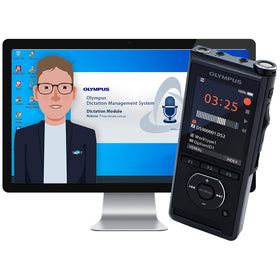
From Camera to Courtroom: GDPR Compliant Body Camera Solutions
Body Worn Video recording does not fall under the traditional definition of CCTV but many of the same guidelines apply. Body camera users and data controllers should take into consideration some key points when it comes to collecting and controlling footage captured from body-worn cameras in order to ensure GDPR compliance.
Where can Body Cameras be used for filming and collecting evidence?
- Body cameras can be used in public places (any location where members of the public are free to go).
- Semi-public places (private property which gives the public access, for example, a train station or airport).
- In any area where a person could assume/take for granted that they are being recorded or monitored by CCTV.
- Anybody taking part in criminal activity or acting antisocially in a public/semi-public space can be filmed without explicitly giving consent.
- In private places such as households, subjects must give explicit permission before recording can lawfully commence.
What data protection guidelines need to be considered when collecting and storgin Body Camera evidence?
- Data (footage) should be processed lawfully, fairly and in a transparent manner – Access should be restricted to footage captured and viewed/controlled by relevant parties only.
- Collected for specified and legitimate purposes – Body camera users should ask themselves what and why they are recording. Is filming necessary? Will these events need to be captured for evidential purpose?
- Footage should be adequate, relevant and limited to what it is necessary to the purposes – footage captured requires enough context to provide a third party with enough information to make a fair judgement of the situation. Footage should not be captured or stored unnecessarily.
- Permits identification of the subject’s for no longer than is necessary – footage captured can be stored for a length of time in order to support a case. Unused/irrelevant data can be stored for a period of time, after which, must be deleted.
How can Speak-IT Solutions assist in supplying a Body Camera solution to meet your requirements?
Speak-IT supply cutting edge body camera technology that provides users with the tools required to ensure that footage captured can be controlled in such a way that ensures GDPR compliance.
Hytera Body Cameras, like the VM685 and VM780, are encrypted via 256-bit AES and PIN protected. This means that should the camera become lost or stolen, the footage contained within is protected from unauthorised access.
Hytera SmartMDM body camera management software not only allows users to automatically download, tag and search footage from a large number of cameras, but it also allows users to set role-based permissions and restrict access depending on the user’s level of clearance.
Certain functions (such as deletion) from the camera can be protected via 6 digit PIN lock. A password is also required to access and download footage, ensuring that data is controlled and managed in a secure and GDPR compliant manner.
Hytera cameras, like the VM685 and VM780, also provide users with a rotatable camera lens and front-facing screen. This allows the subject to clearly see that they are being filmed. The camera lens can be turned to face backward as a stronger visual signifier that recording is not currently being taken place.
In the meantime, please feel free to call on 0121 456 7800 or email sales@speakit.co.uk to speak with a product specialist. You can view our entire range of secure body camera systems here.








Leave a comment